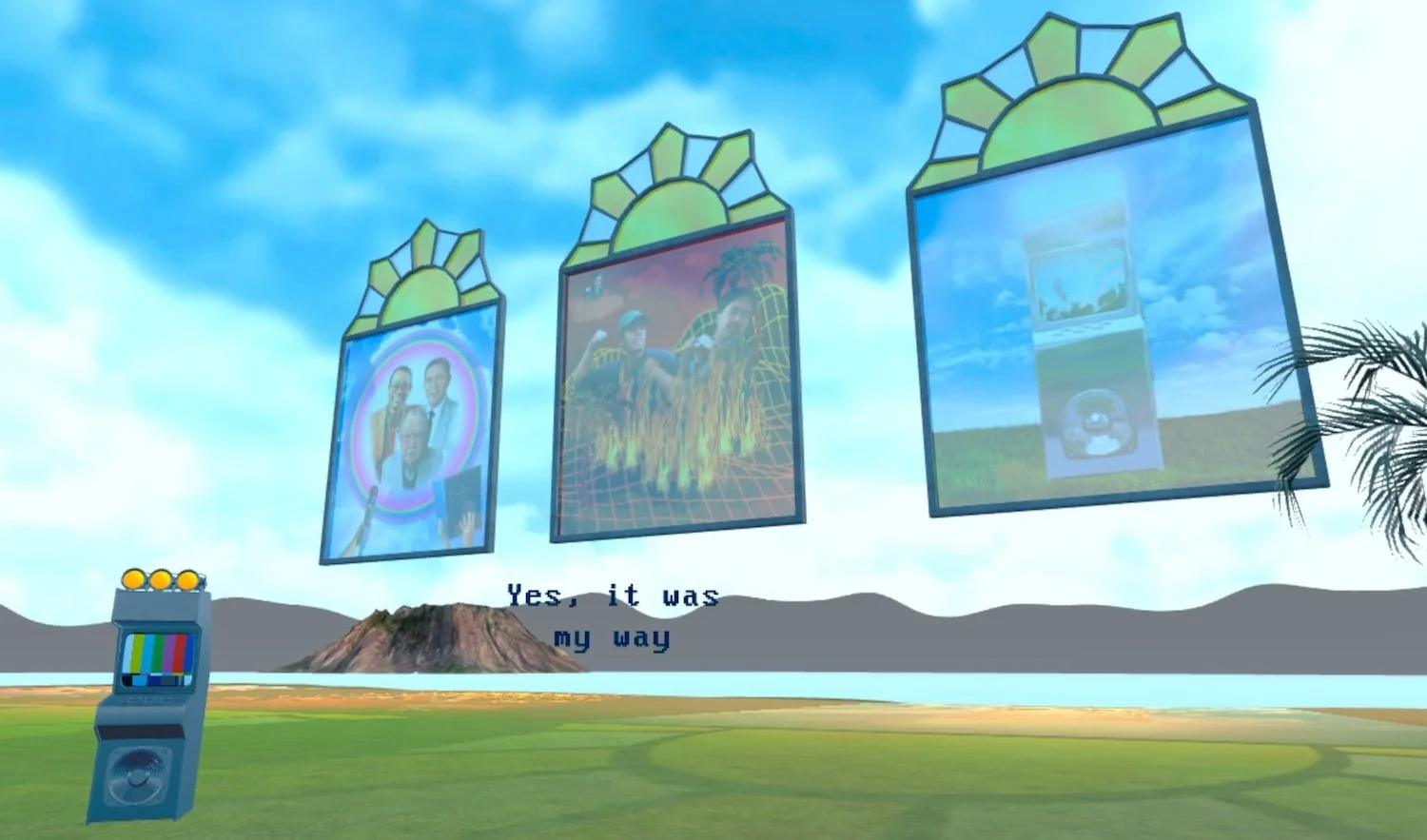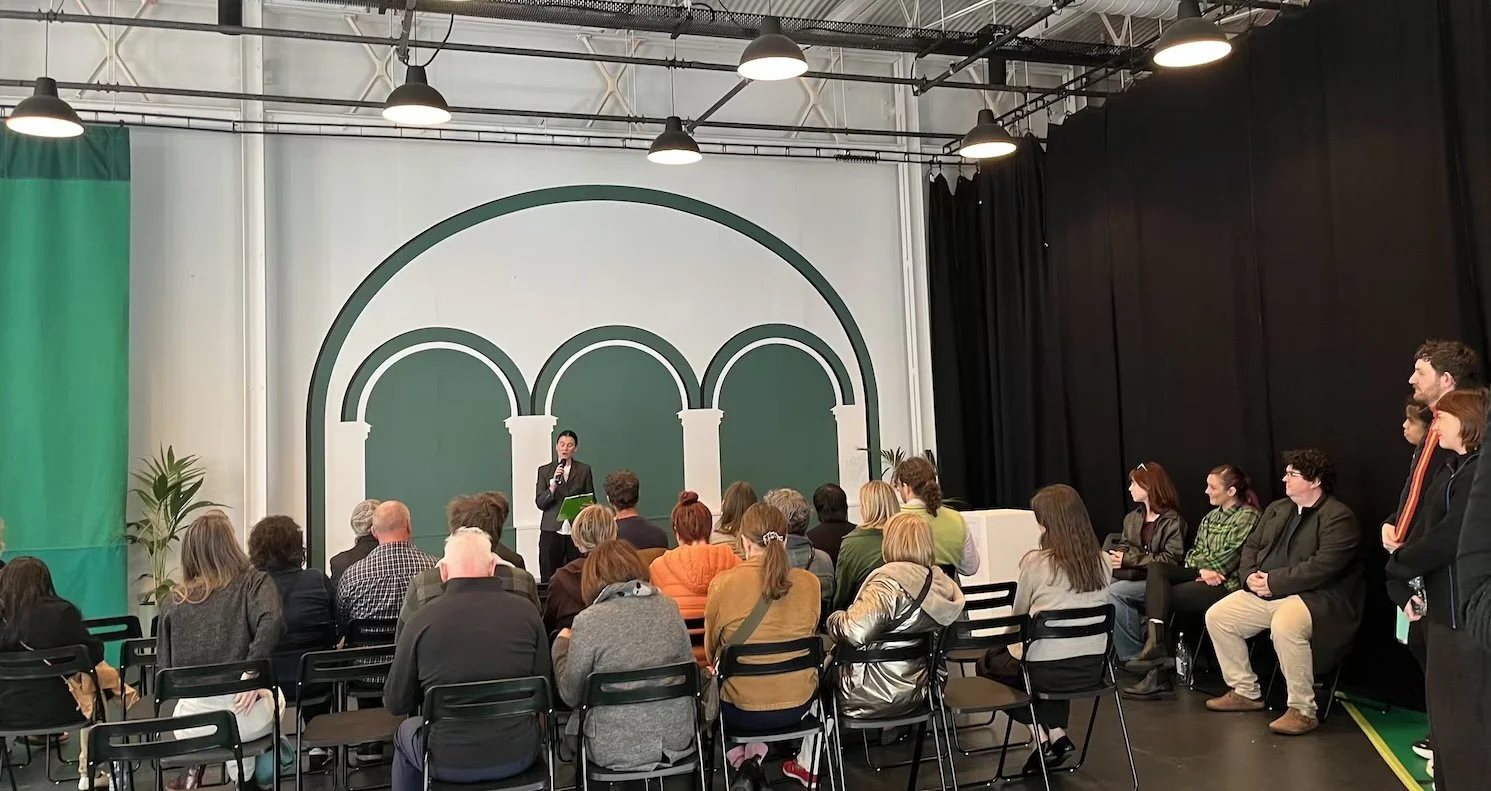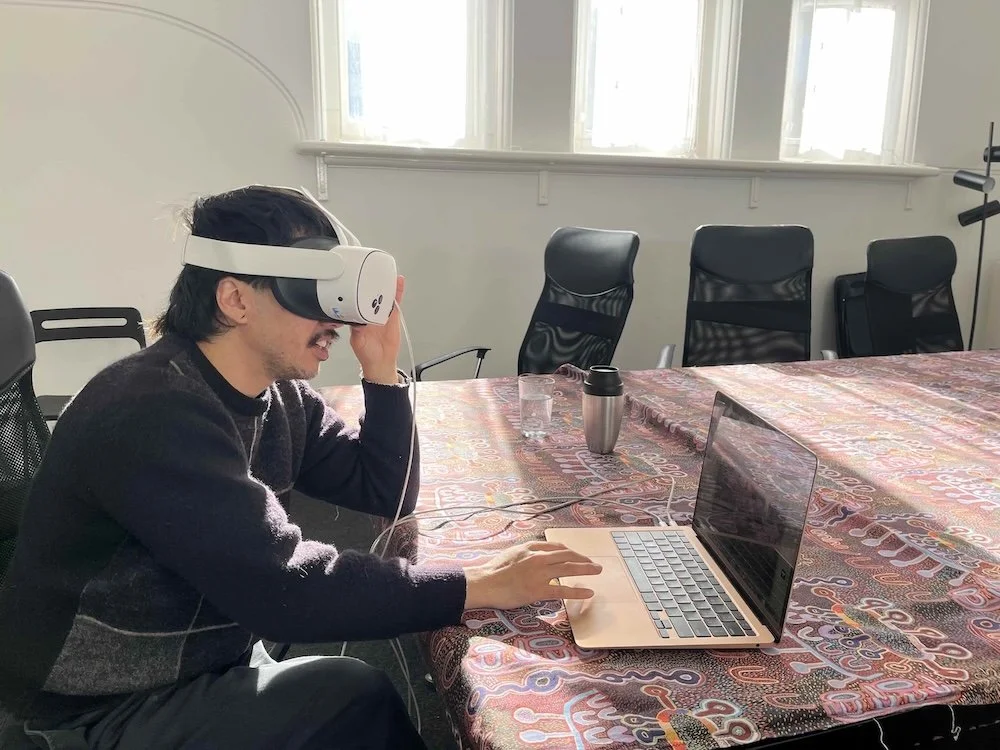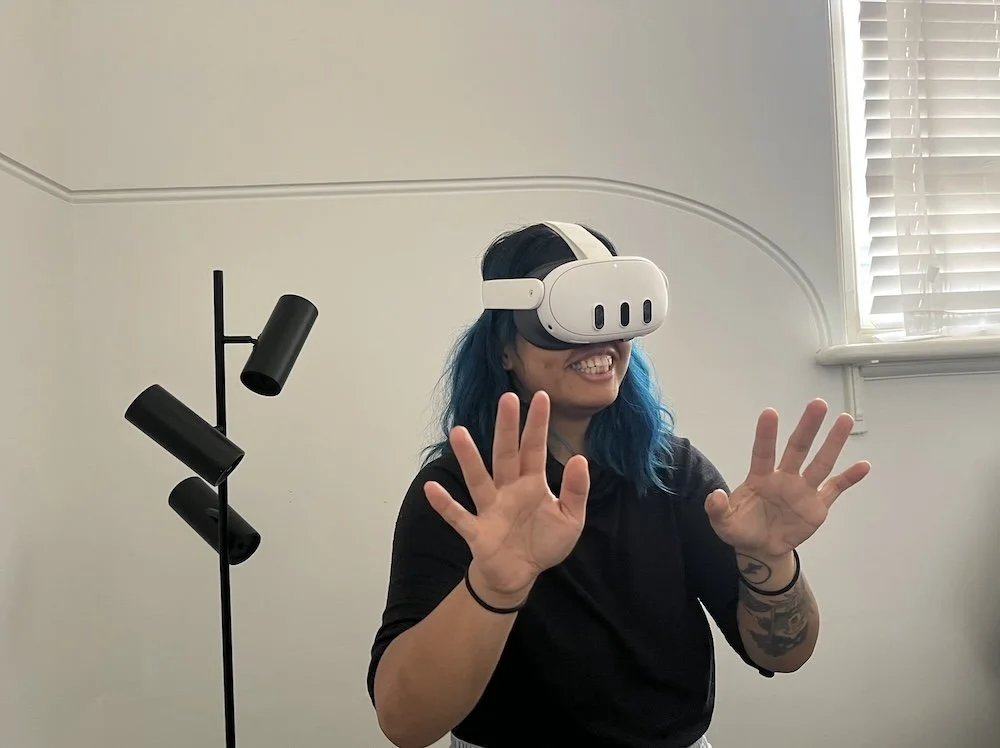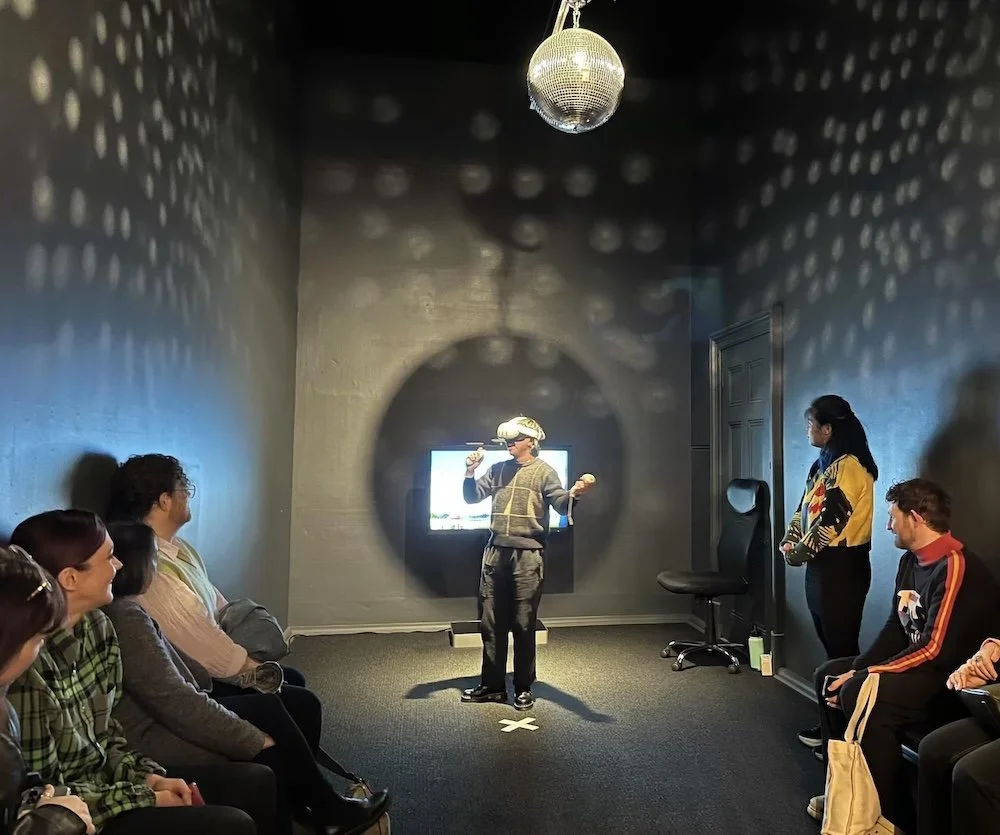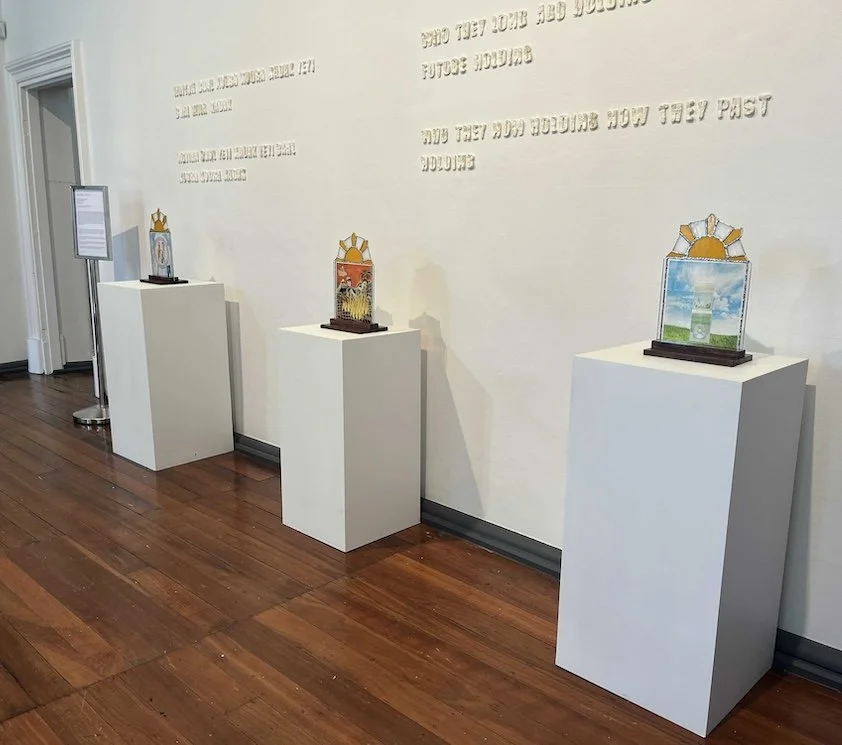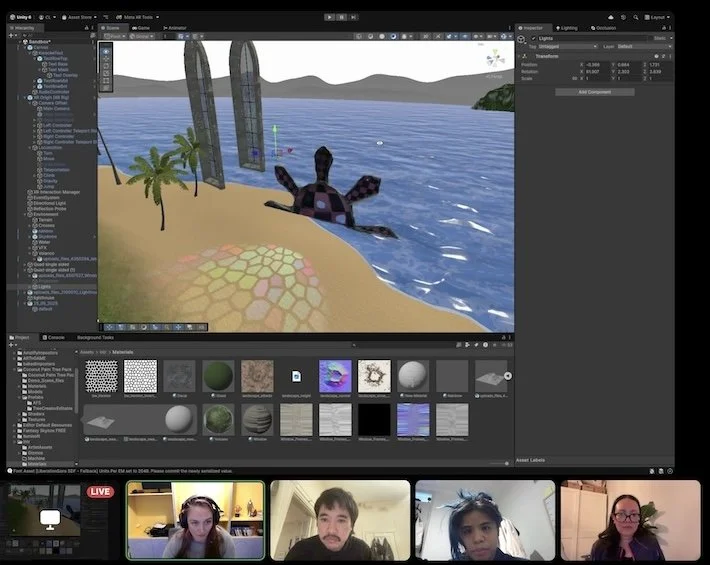Pica Immersive Arts Intensive Mentorship
Screenshot: The Machine Needs a Heart
I previously wrote on my blog about becoming one of the official mentors as part of The Perth Institute of Arts boorda yeyi program. You can read more about this here.
The Intensive Mentorship program ran over three months and culminated in an Open Studio held over the weekend on 26 July 2025. The idea behind the program was to match artists with a team of developers and technologists to work collaboratively on the development of an immersive artwork prototype. Artists receive a participation fee and ongoing feedback from a selection of mentors to refine their concepts and execution, meeting in person and online throughout the program to share their progress.
Pica, boorda yeyi, Open Studio, 26 July 2025
The Team
It was an absolute privilege to mentor talented artist duo Colin Smith and Jen Datu. Their enthusiasm and willingness to experiment and explore new technology has resulted in the immersive virtual reality work “The Machine Needs a Heart”.
Colin is a queer and neurodivergent Filipinx artist practicing on Whadjuk Noongar boodja (Boorloo/Perth). Their interdisciplinary visual arts practice examines ideas of faith and personal belief systems, where they emerge and how they are expressed under late-capitalism. These ideas are often playfully explored through karaoke performance, digital collage and installations that reimagine social gathering spaces.
Jen is an Australian-Filipinx artist living and working in Boorloo/Perth, on Whadjuk Noongar country. They are developing an interdisciplinary practice that is interested in antagonising boundaries of spirituality and violence. Through repetition and subversion, they process the emergence of intuitive self-healing in their work.
It was such an enjoyable process to provide guidance in narrative and user experience to this unique project. Bringing this project to life with phenomenal technical skills has been XR developer and producer extraordinaire Caitlin Lomax and talented 2D/3D artist Sarah Kirkham.
L-R: Natalie Marinho, Delta Kirkham, Caitlin Lomax, Jen Datu, Colin Smith.
Artist: Colin Smith.
Artist: Jen Datu
The Machine Needs a Heart
The work was inspired by the bizarre phenomena of the ‘My Way’ killings in the Philippines (murders linked to public singing of Frank Sinatra’s My Way) and invites you to step into a lush, paradisiacal landscape, guided by a celestial songster god. In this space, audiences are urged to sing the once-forbidden song without fear, as an act of collective catharsis.
Blending Catholic iconography, Filipino mythologies and speculative storytelling, the work turns a site of tension into one of joy, vulnerability and voice-driven power. Through this convergence of folklore and technology, The Machine Needs a Heart explores how digital spaces can hold spiritual meaning and invite connection across cultural and generational divides.
Pica, boorda yeyi, Open Studio, “The Machine Needs a Heart”.
Mentoring in Narrative and User Experience
Colin and Jen have been working on these themes for several years and brought a strong vision to this work. As a mentor, I saw my role as ensuring that the technology enhanced this vision rather than act as a novel distraction.
Early on Colin and Jen selected virtual reality as their medium for this work. They wanted to bring the world of karaoke to life in a 3D space and explore the relationship between this song and Filipinx culture as well as the interplay between performer and audience presented in a karaoke/gallery setting.
There is a playfulness to this work which may speak to the fact the entire team is familiar with the language and modality of video games including player agency, exploration and the way that narrative can unfold.
But there are deeper and darker undertones present in the work when one notices the massive stained glass windows hovering over the beach creating a pseudo church. These are in fact digital representations of physical windows created by Colin and Jen as part of this work. Catholicism and colonialism has an entrenched role in the history of the Philippines and that tension and violence is displayed through the windows casting their light over the white beach sand.
Artist work: The Machine Needs a Heart, stained glass window.
Artist work: The Machine Needs a Heart, stained glass windows.
Lines of inquiry
I posed a number of questions for Colin and Jen as they considered how best to present their work in a 3D spatial environment.
What are the core elements of the experience? (Colin and Jen found it useful to create a rough storyboard to work through this)
What are the important visual references to incorporate from traditional karaoke videos into the virtual world? (Colin and Jen provided many resources and images and explained their meaning)
What does the scope of the world include and how does the participant move around it? (Caitlin suggested creating a map, located key landmarks and zones)
How does the experience commence? How will it end?
How will you guide the participant to interact with the world?
At any point in time, do they know what to do next?
How do we balance the need for explicit instructions with more subtle narrative and environmental design?
Is this a linear narrative? Is it always the same regardless of the user or how many times they enter the experience?
What degree of agency is the participant afforded?
Do they have choices? If so, how will that be communicated?
How do you what the participant to feel at different points in the experience? What are the emotive arcs and how do we enhance those through design?
Immersive Realism
One interesting concept that came up during the project was Immersive Realism. Because virtual reality is an environment that is 100 percent virtual, sometimes there’s a psychological expectation for a level of realism.
I'm not talking about visual fidelity when something looks real or is indistinguishable from a physical object but more a level of psychological immersion in the experience.
When this expectation is not met in can break this sense of immersion. Some examples include when the user’s head height is inaccurate or when objects don’t cast shadows.
But even when these are accounted for, a spatial scene can feel lifeless. In this instance we can introduce very subtle environmental aspects which makes it feel more lifelike, even tactile. That is… more real. It helps to support the "world building" of an immersive experience.
Some things the team introduced to the work were: a flock of birds circling high above, smoke from a distant volcano, and the sounds of waves lapping (which were spatially anchored to the beach so as you walk away the sounds decrease). Another great feature was the artists’ idea to scan their physical karaoke microphone using photogrammetry and attach this to one of the Quest’s controllers so that it was visible in VR.
Collaboration
The team collaborated using Discord and Miro. The former was invaluable to share ideas, ask questions, post screenshots and host video calls.
With regard to cross-sector collaboration I want to give a massive shout out to the technical team on this project. When it comes to projects like these, technologists like Caitlin and Delta bring not only experience and knowledge but also their own creativity especially when working within the limitations and constraints that are inherent with immersive technologies.
I want to acknowledge the stellar work of Caitlin who developed the VR experience and gave so much valuable technical guidance to Colin and Jen through out this project. Particularly on how to ensure a high level of performance and optimisation to run on the Meta Quest 3 headset. As 3D artist on the project, Delta did an amazing job of creating high quality assets that looked great in VR while also assisting the performance load by keeping those polygon counts super low.
Team Meeting via Discord.
Visitor Services Officer Document
An important practical part of exhibiting an immersive work in a gallery setting is providing a document to assist the Visitor Services Officers (VSO) who will be introducing and guiding gallery participants through the work.
Here are some of the sections were included in the document.
Contact information
Overview of the work: title, format, duration, audience, content warnings
Technology: platform, input/controllers, guardian setup, accessories (wifi, video casting)
Set up and operation: how to turn the headset on and open the application
Onboarding: context of work, what to inform the participant, about the virtual world, adjusting the hardware for different participants, controllers
Trouble shooting
Safety and hygiene
Summary
As an Australian-Filipinx myself, this project has allowed me to reconnect with my own background and re-examine cultural touchstones in a new light. I too have grown up with karaoke and singing as part of family gatherings and have heard My Way on way too many occasions – thankfully without the rage. But this project as given me pause to reflect on why karaoke may be such a widespread experience for Filipino diaspora. As well as realising the physical act of singing can be so cathartic, especially when performed in front of a safe and receptive audience.
Thank you, Jen and Colin, for this special opportunity. It was a joy to work with you both and learn more about your respective backgrounds and art practices. I hope you have the opportunity to continue with this work and expand this world in the future.
